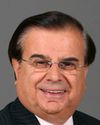There really are so many different factors at play that it's very hard to say. In the interest of trying to be as clear and open with you as possible, I will make some guesses--and let the record show these are pure guesses.
My expectation would be that carriers that have many different fleet types, many different levels of service requirements, and essentially many different manifestations of the service they're offering on any given day are less likely, probably, to go to 1:50.
Let me just give you a very pointed example, to be as concrete as possible. Air Canada, for instance, has a business class. That is always going to have to be taken into account for the purposes of their providing service. Their flight attendants are fully professionally trained as well, so someone who is on board for the purposes of service is actually also a fully qualified safety professional as well. I would stress that they need to speak for themselves, but I would suspect that they will not be at the 1:50 ratio level very often, even if they choose to apply it.



